Last week CeramicSpeed claimed that its chainless Driven drivetrain concept was the most aero in existence.
Now, the brand has revealed an actual shifting mechanism which uses a wirelessly controlled ‘split pinion’ to move across the concentric circles of gear teeth that make up the flat ‘cassette’ mounted to the rear wheel.
Developed with help from the University of Colorado’s Mechanical Engineering Department, the latest Driven system is looking more and more like something that could turn into a viable product.
- All our Eurobike 2019 coverage
- CeramicSpeed’s incredible chainless drivetrain now claims to be the most aero too
How Driven changes gear
Driven’s pinions are the rings of bearings at either end of the driveshaft which engage with the gears.
In the shiftable version of Driven, the front pinion is fixed while the rear one is split down the middle, with the two halves able to move independently as part of each shift between gears.
To create a seamless shift between gears, the two halves of the rear pinion move in sequence — CeramicSpeed calls it a “step and follow pattern” — each moving at the point where it is “free of the cassette”.
It’s tricky to follow exactly what this means, but it sounds like something comparable to a dual-clutch transmission in a car, where the drivetrain is never truly disengaged during a shift.
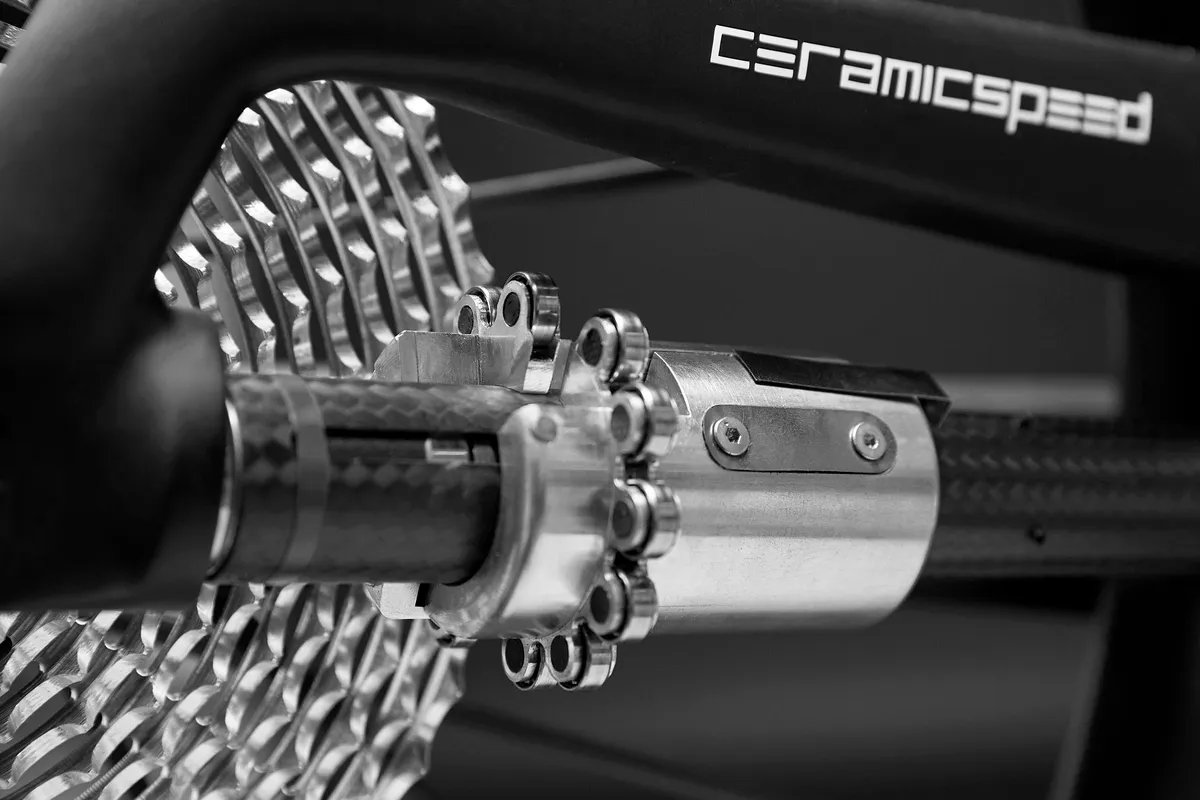
In the Driven system, a ‘torque decoupler’ containing two spring-loaded bearings is located at the trailing half of the split pinion, supposedly allowing for seamless meshing.
The shifting is controlled by an actuator hidden inside the driveshaft and this is powered by a rechargeable battery in the same location.
CeramicSpeed claims that the system could potentially shift faster than any conventional electronic drivetrain.
Are you confused by the mechanics of the shifting? CeramicSpeed has released this video explaining the process, although it does leave some questions unanswered:
Driven for mountain bikes?
As if in answer to the many commenters who doubted a system like this could ever work on a mountain bike, CeramicSpeed is showing off a full suspension Canyon Lux XC bike outfitted with Driven.
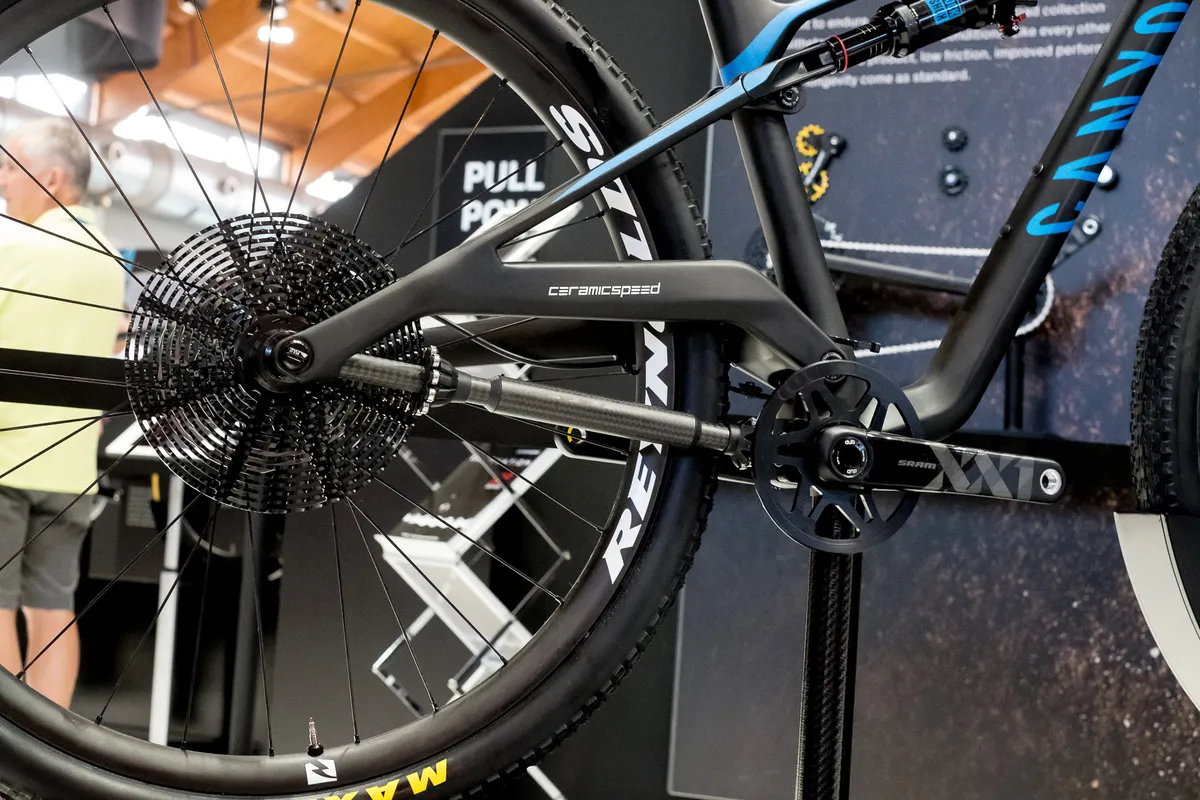
It appears that concerns about how the system would cope with a variable effective chainstay length may have been addressed by a shaft-within-a-shaft design that allows the driveshaft to change length.
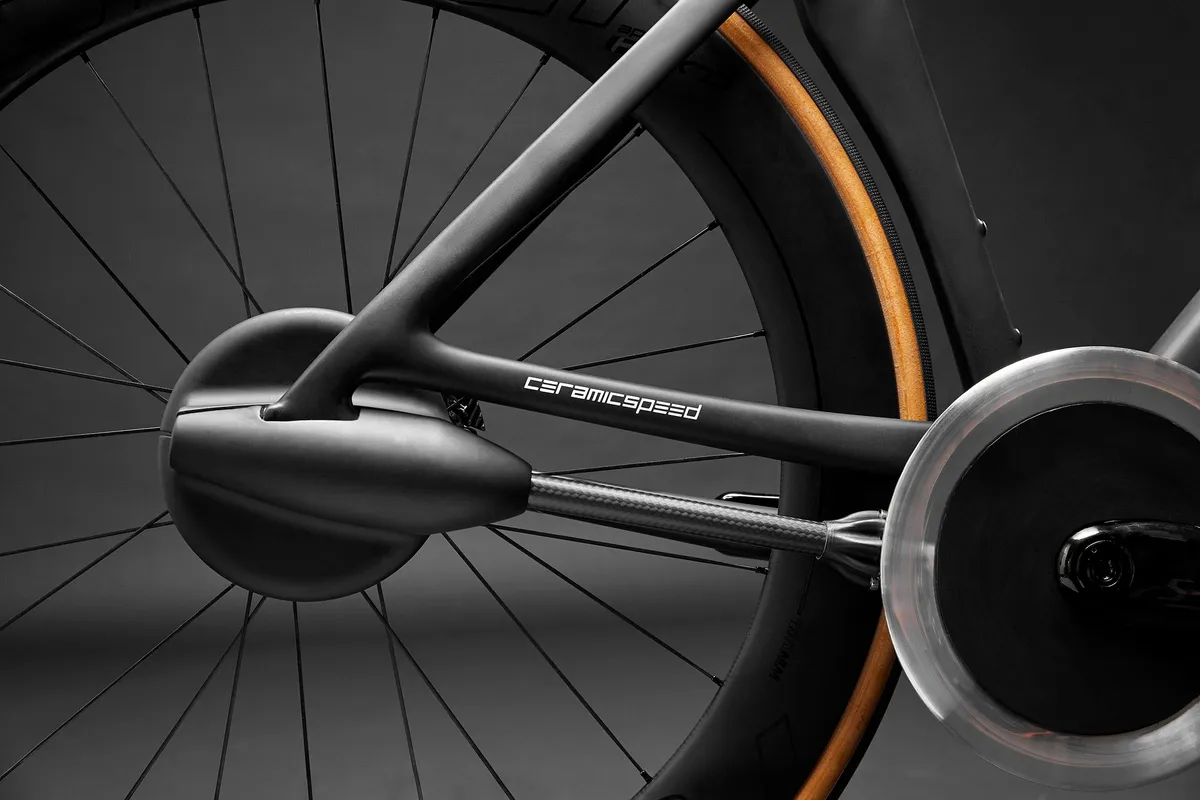
It remains to be seen whether Driven could actually cope with mud and grit but, as with the aero version of the system that CeramicSpeed took to the Specialized Win Tunnel, there’s potential to protect the components inside housings.
Is Driven vapourware?
Lest we be accused of hyping a product that remains a concept and which no independent journalist has yet had a chance to test in the real world, know that we remain sceptical about Driven, but intrigued.
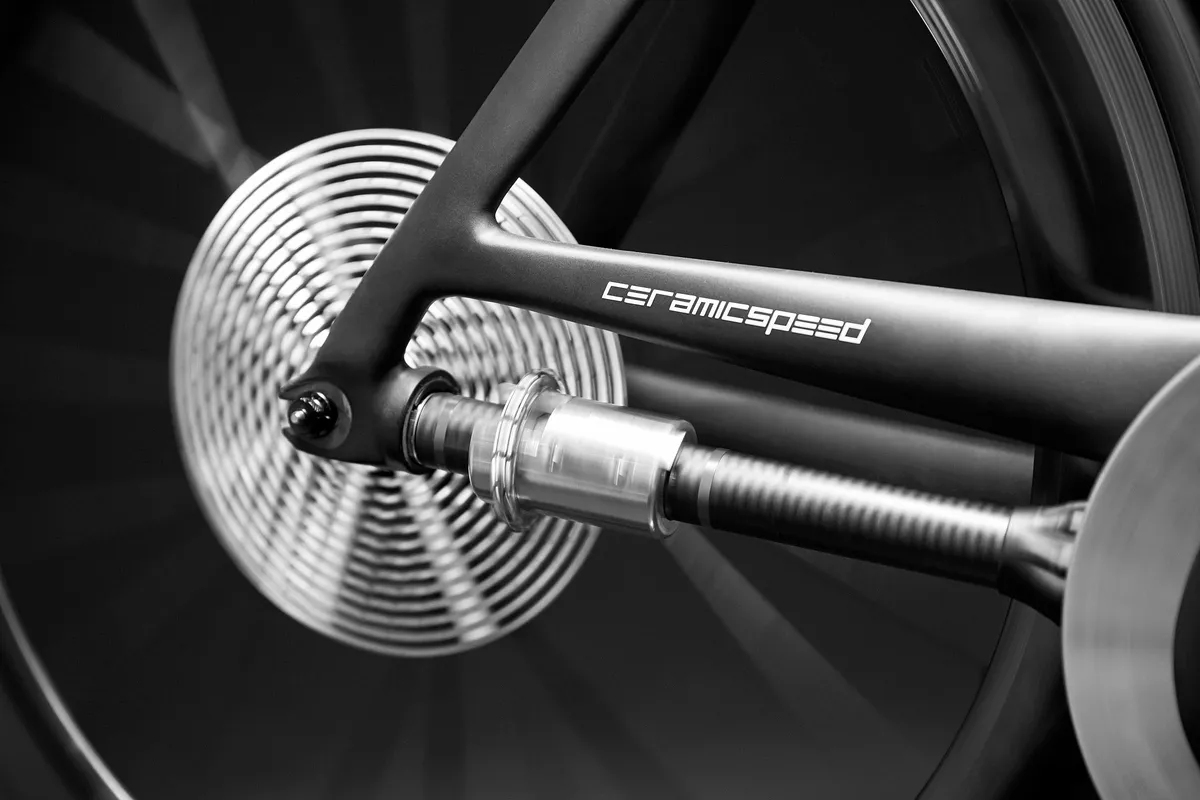
The shifting mechanism is genuinely ingenious, and more sophisticated than we anticipated.
The concerns about real-world viability are yet to be addressed: how would the system cope with flex through the chainring? How durable would it be given how small bearing-to-teeth interfaces appear to be (in contrast to the way a conventional chain wraps all the way around chainrings and cassette cogs)?
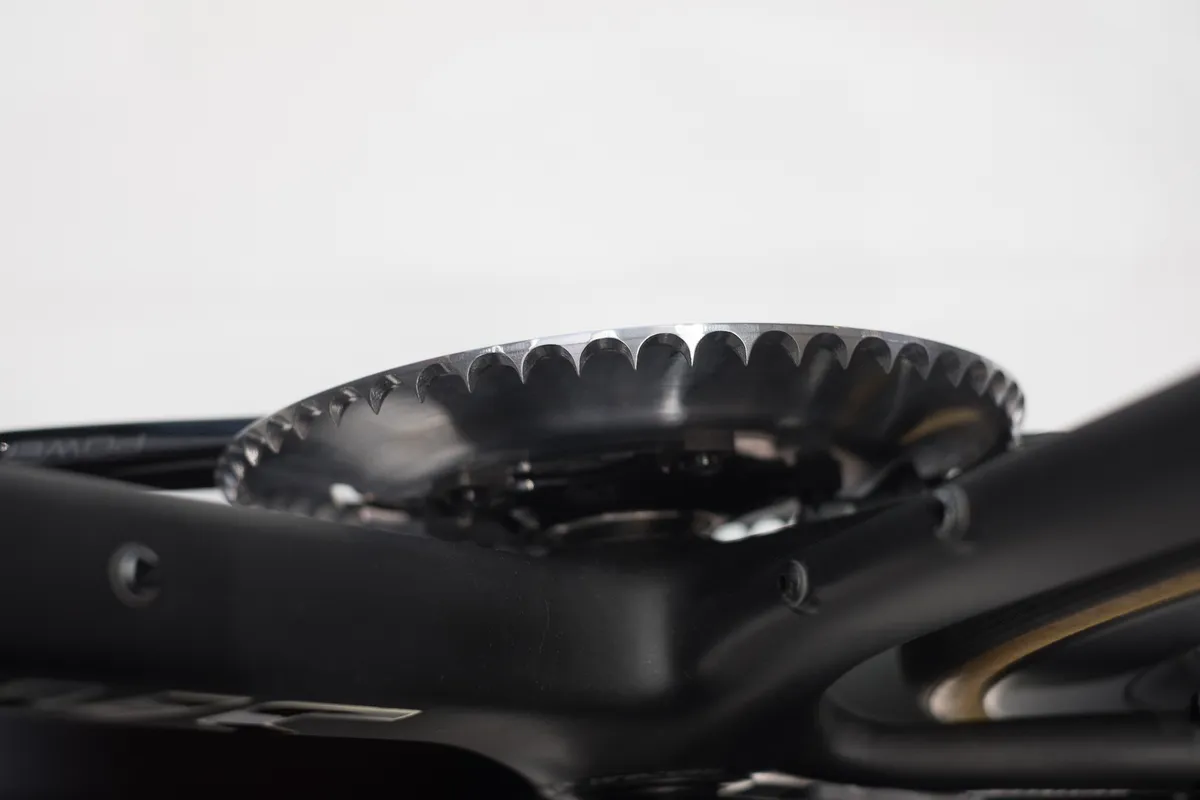
Nevertheless, we applaud the innovation and look forward to the day when we can actually try out Driven for ourselves, if it ever comes.

